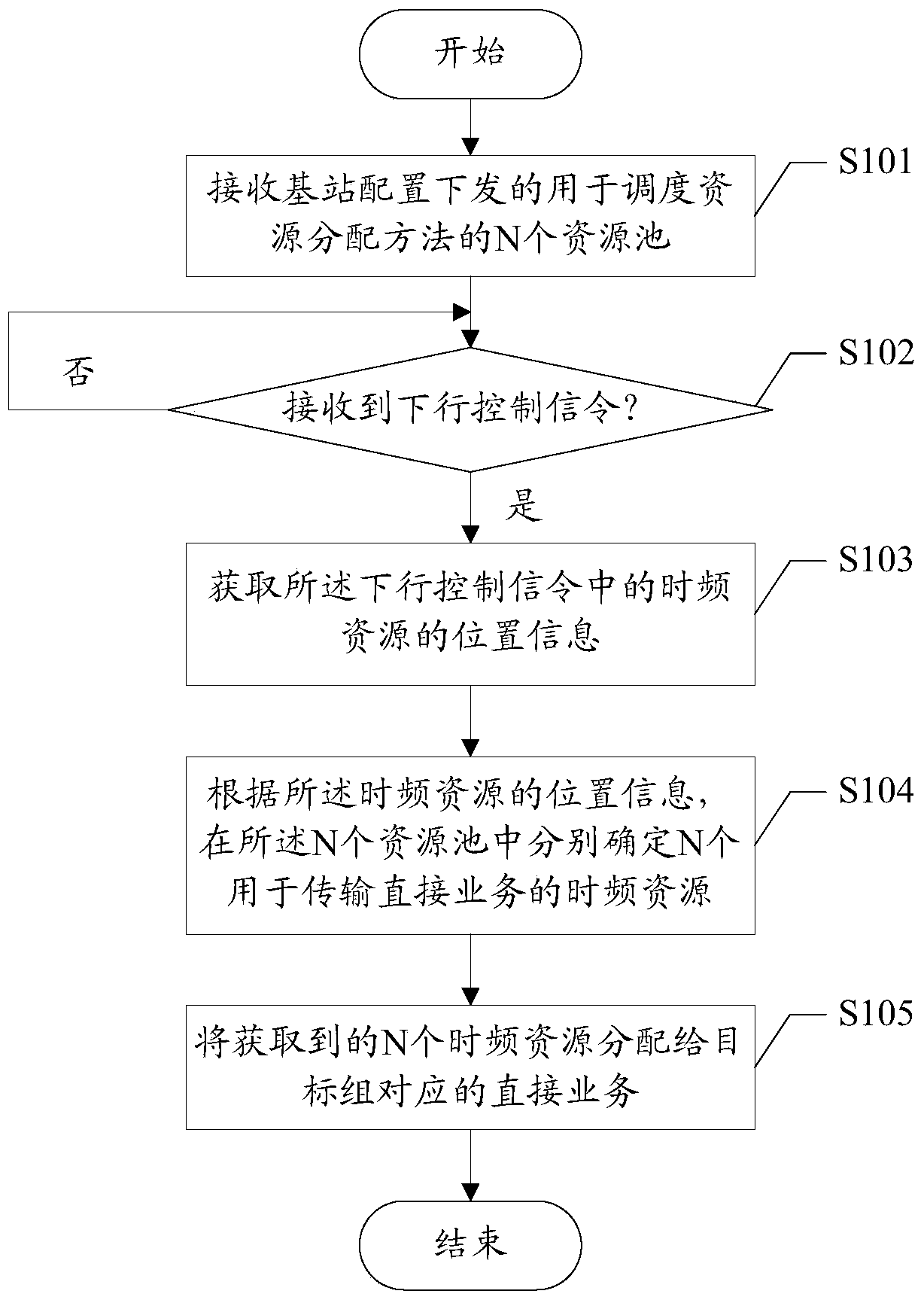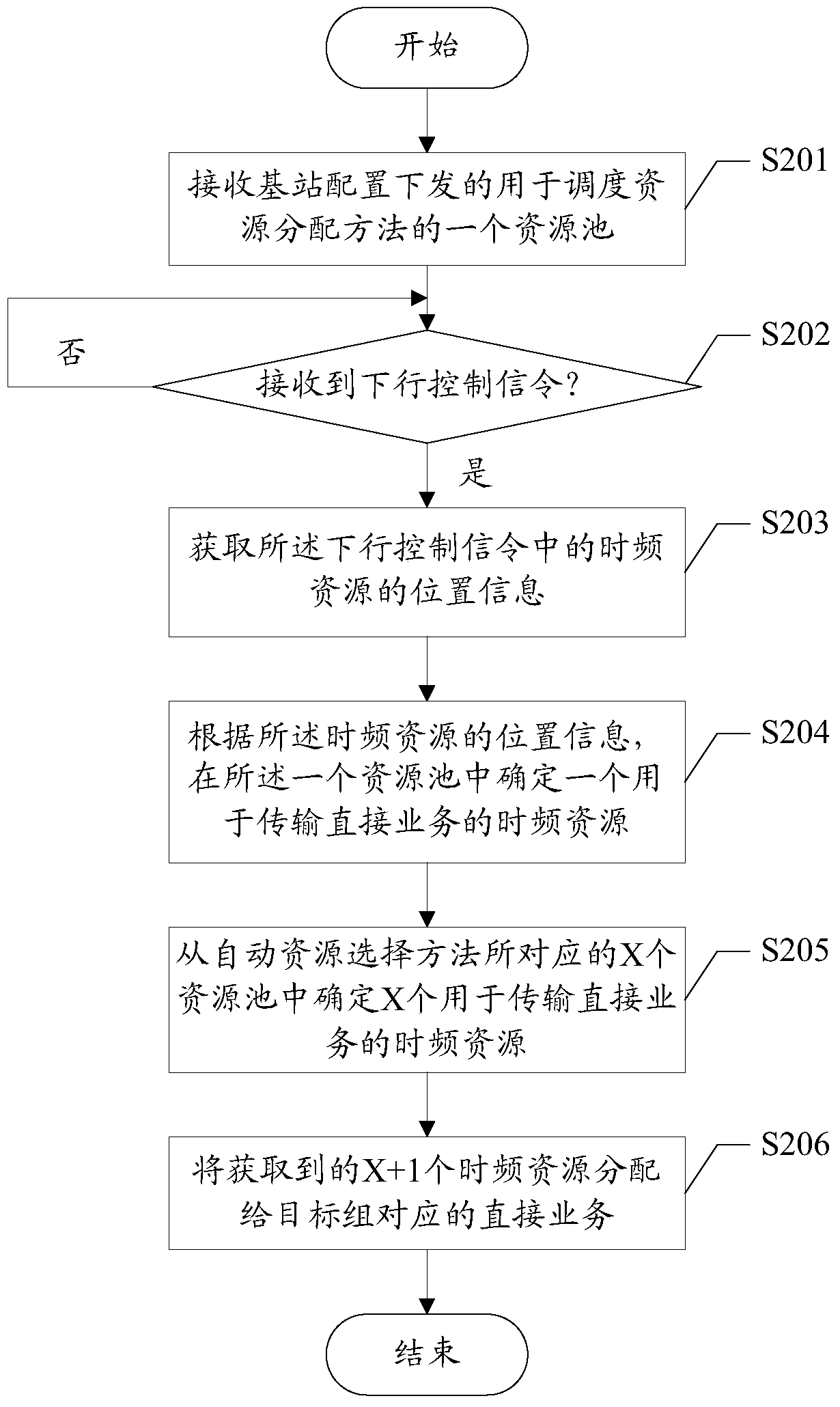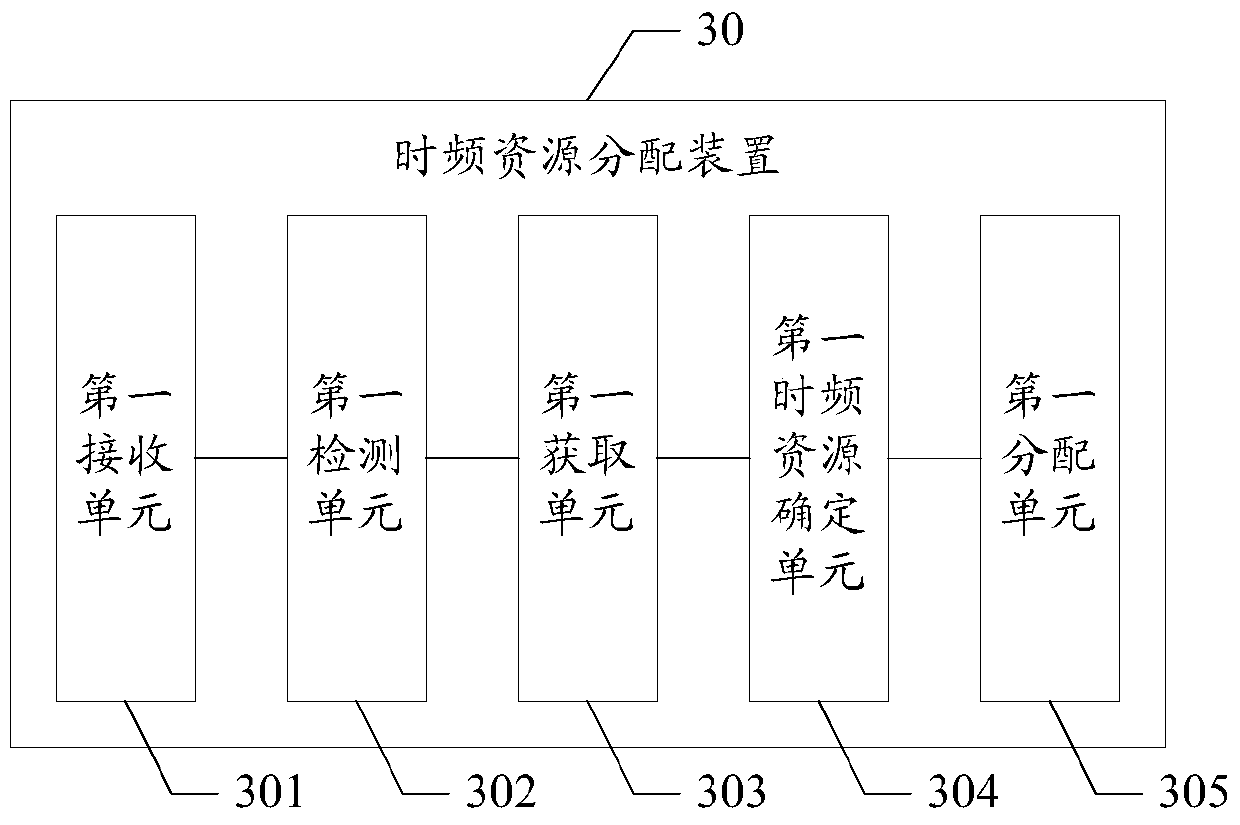Time-frequency resource allocation method and device
A time-frequency resource and allocation method technology, applied in the field of time-frequency resource allocation methods and devices, can solve problems such as large delay in direct service transmission, and achieve the effect of avoiding failure to send normally
- Summary
- Abstract
- Description
- Claims
- Application Information
AI Technical Summary
Problems solved by technology
Method used
Image
Examples
Embodiment Construction
[0059] It can be known from the above that in the existing solution, the base station only allocates transmission resources to the transmitting UE once in one SC period, or only allows the transmitting UE to automatically select transmission resources once. The transmitting UE can only send direct data to one target group in one SC period (the number of direct data transmissions can be multiple times, but the data transmitted in one SC period is the same). However, in practical applications, there are often scenarios where direct services are sent to multiple target groups on the transmitting UE side. Since direct data can only be sent to one target group in one SC period, the direct services of other target groups can only wait for other SC periods to be sent. When there are many direct services, some of the direct services may need to wait for multiple SC cycles before being sent, and there is a problem of large transmission delay.
[0060] In the embodiment of the present ...
PUM
 Login to View More
Login to View More Abstract
Description
Claims
Application Information
 Login to View More
Login to View More - R&D
- Intellectual Property
- Life Sciences
- Materials
- Tech Scout
- Unparalleled Data Quality
- Higher Quality Content
- 60% Fewer Hallucinations
Browse by: Latest US Patents, China's latest patents, Technical Efficacy Thesaurus, Application Domain, Technology Topic, Popular Technical Reports.
© 2025 PatSnap. All rights reserved.Legal|Privacy policy|Modern Slavery Act Transparency Statement|Sitemap|About US| Contact US: help@patsnap.com



